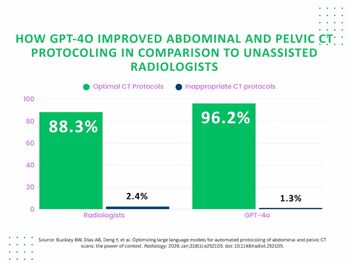
CCD matches laser digitizer image quality
Until hospitals become fully filmless, PACS displays and archives will require devices to transform conventional x-ray film into digital images. The use of digitizers requires performance evaluation to assure medical image quality.Two technologies
Until hospitals become fully filmless, PACS displays and archives will require devices to transform conventional x-ray film into digital images. The use of digitizers requires performance evaluation to assure medical image quality.
Two technologies exist: time-tested laser-based digitizers and newer charge-coupled device (CCD)-based scanners. Interest is growing in CCD devices, largely because of their lower cost. If CCD digitizers can render adequate image quality, radiology departments can use them to address reading requirements for low-volume image acquisition sites.
A study at the Mallinckrodt Institute of Radiology comparing laser- and CCD-digitized images for perceived image quality differences found little difference in image quality (Clark et al. Observer study involving laser-digitized versus CCD-digitized images. J Digital Imag.
"This user preference study supports the hypothesis that CCD and laser digitizers render equivalent image quality for a range of chest and musculoskeletal exam types," said principal investigator Kenneth W. Clark, a research associate in Mallinckrodt's Electronic Radiology Laboratory at Washington University in St. Louis.
Before the survey, Clark worked with the CCD vendor to evaluate and maximize image quality. Since "adequate image quality" depends on the reading task, a variety of plain film radiographs were selected to provide a comparative assessment of digitizer quality, he said.
Films of 50 two- and three-view studies (ankles, chests, c-spines, shoulders) were digitized on calibrated laser (Kodak Lumisys 75) and CCD (VIDAR SIERRA Plus) digitizers. Six radiologists independently compared digitized images on twin high-resolution monochrome monitors. Matching images were randomly presented on left/right monitors to support blinded comparisons. Observers scored image quality for several diagnostic criteria on left and right images as "no different," "slightly different," or "significantly different."
Of 7324 responses, 77.8% scored "no different" and 21.9% "slightly different" (5.9% favoring CCD, 16.0% favoring laser). In only 0.3%, did observers hit "significantly different."
Other recent papers have also looked at the digitizer issue:
- A protocol-based evaluation of medical image digitizers (Br J Radiol 2001;74(885):841-846)
- CCD film digitizers in clinical practice: evaluation of the main properties (Med Inform Internet Med 2001;26(2):101-114)
"Faced with digitizer choices, I would want to make sure I'm getting adequate image quality before looking at price, reliability, support, and ease of use," Clark said.
Newsletter
Stay at the forefront of radiology with the Diagnostic Imaging newsletter, delivering the latest news, clinical insights, and imaging advancements for today’s radiologists.




























